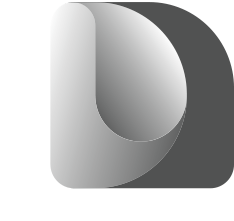Are you contemplating a career in design but feeling lost in the vast expanse of creative possibilities? As someone who began their journey as a self-taught designer later than most, I fully understand your concerns. I roamed through various avenues before finding my calling in design research.
The encouraging news is that, no matter your career stage or how distinct your background seems, there’s a niche for you in the design world if you aspire to be a designer. In this guide, we will navigate the path to becoming a designer, breaking it down into manageable steps.
Grasping the Designer Landscape
To embark on your journey into the world of design, you need to grasp the myriad roles it offers. Design encompasses far more than aesthetics, with roles ranging from UI, UX, visual, interaction, motion, to research. The initial step is comprehending these roles and identifying where your passion lies.
If the multitude of titles is perplexing, don’t be disheartened. Start by distinguishing the nuances between these roles. By assessing your innate interests and curiosities, you can gradually narrow down the role that aligns with your questions and preferences. If you find it challenging to pinpoint a perfect fit, remember that the boundaries between these roles continue to evolve. Embrace the journey and explore what fascinates you the most.
Create, Create, Create: Practice Makes Perfect
In the past, the absence of a centralized hub for design learning led me to scour various resources to piece together my design education. Fortunately, the landscape has evolved, offering an abundance of resources. Here are some invaluable platforms:
- Design Tuts+: A treasure trove of practical design tutorials, spanning from graphic design to web design and drawing theory.
- Gibbon: A resource-rich platform featuring learning playlists on diverse topics, including storytelling and copywriting – both crucial design skills.
- Hello Designer: To save you the trouble of resource curation, I’ve assembled a collection of valuable resources. Your one-stop source for design learning.
Cultivate the Designer Mindset
Adopting a designer’s mindset is an ongoing process, not an overnight transformation. It involves developing an understanding of mental models, recognizing core interaction patterns, and familiarizing yourself with design principles. Start building this mindset now by exploring websites like pttrns and lovely ui. Pay attention to the elements you admire and dislike, and, most importantly, understand why.
If you’re unsure about your design instincts, don’t be disheartened; you likely possess a unique aesthetic inclination. By learning to tap into this, you can unleash your inner designer. And if you need help understanding or articulating your design ideas, don’t hesitate to write essay about them. Writing can be a powerful tool for clarifying your thoughts and developing your design vocabulary.
Engage with Fellow Designers
One of the most valuable resources on your journey is fellow designers. Whether you connect with professionals in your network or reach out to designers from admired companies, these conversations can be transformative. Engage in discussions to understand what makes a design excellent or subpar, and learn how to articulate your thoughts effectively. Conversations with other designers provide insight into their thought processes and, in turn, help you refine your design vocabulary.
These interactions are akin to attending art school critiques – invaluable for honing your design sensibilities.
Attend an In-Person Class
If you lack a circle of designer friends for constant feedback, consider enrolling in an in-person design class. In-person courses offer a unique dynamic for skill enhancement and provide an environment conducive to group discussions.
Seek out courses on subjects that are challenging to master solo, such as typeface design or app flows. Institution like General Assembly, as well as local college continuing education programs, offer diverse options to explore.
Understand Your Audience
Effective design necessitates an understanding of people. Explore their motivations, decision-making processes, what delights and frustrates them. Your journey should focus on nurturing your listening skills and cultivating empathy. By developing an acute sense of what people feel and why, you can design with purpose and enhance their experiences.
The beauty of empathy is that you can foster it at any time and place, so commence your journey today!
Embark on a Project
Now comes the exhilarating phase – putting theory into practice. Design a logo, prototype an app, or start a personal project. Don’t worry if your initial work falls short; it’s all part of the learning process. Start with the fundamentals and build from there.
Share Your Work
Don’t hesitate to showcase your designs, even if you believe they are far from perfect. Constructive feedback is your stepping stone to growth and self-confidence. As your design skills evolve, you will find yourself seeking more detailed and specific feedback. You may even reach the point where you’re confident enough to provide constructive feedback to others.
Design is an endless journey of growth and improvement. Embrace the feedback loop, as it transforms you into a designer with informed opinions and the ability to create designs that truly shine.
To wrap it up, embarking on a career in design is an exhilarating adventure accessible to all, regardless of your current career stage. Remember, design transcends aesthetics; it’s about understanding people, problem-solving, and continuous growth. Follow these steps, ignite your passion, and let your creative spirit flourish. Your design dreams are within reach – it’s time to seize them!

